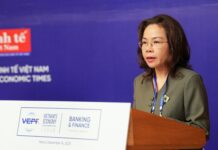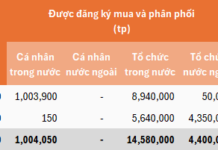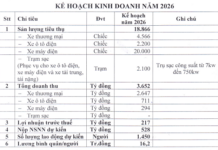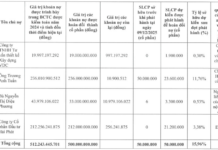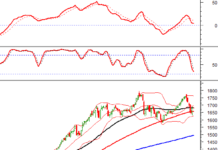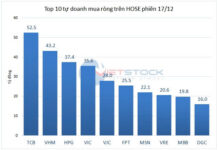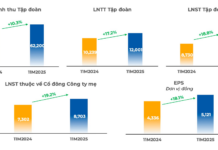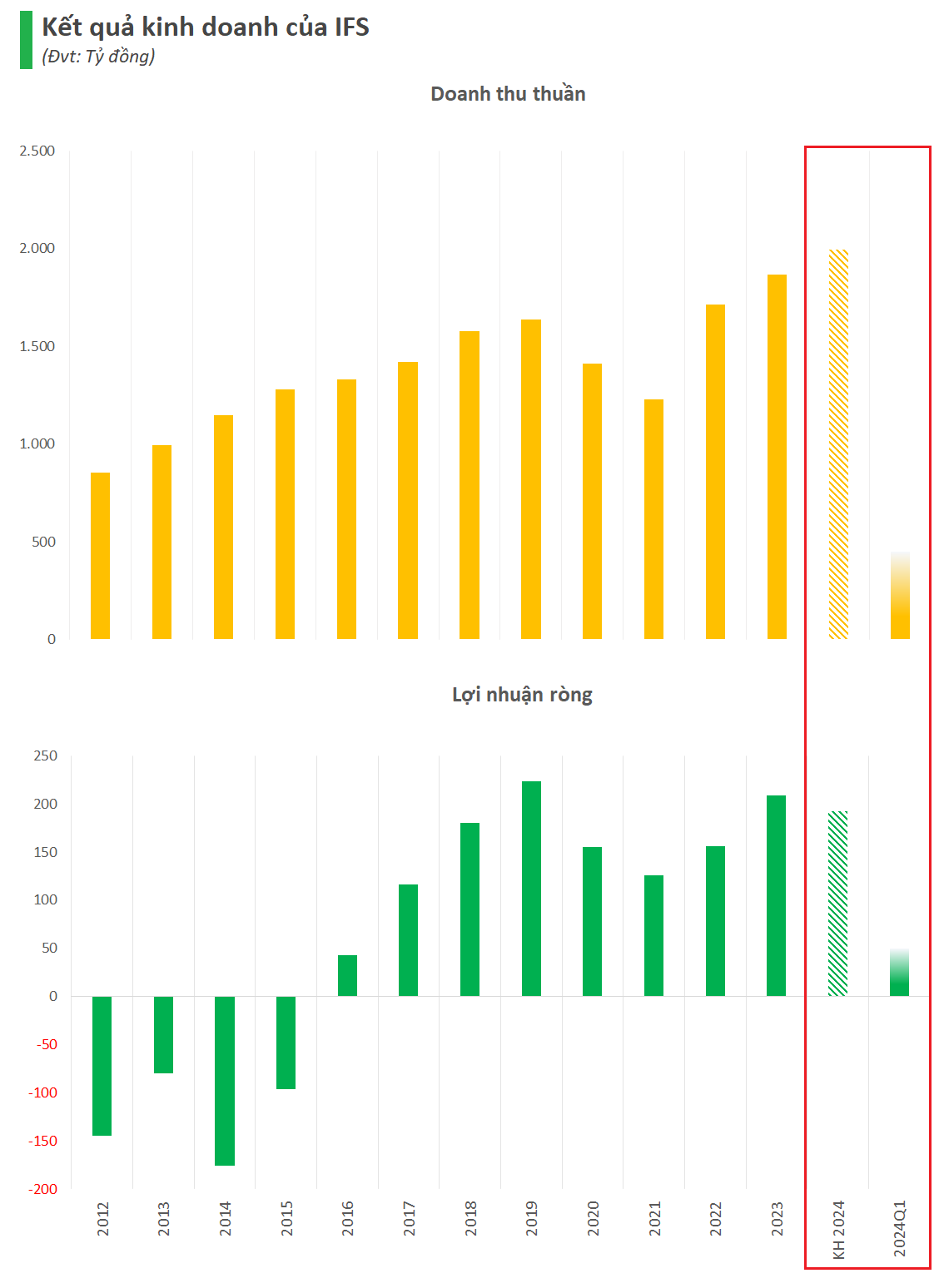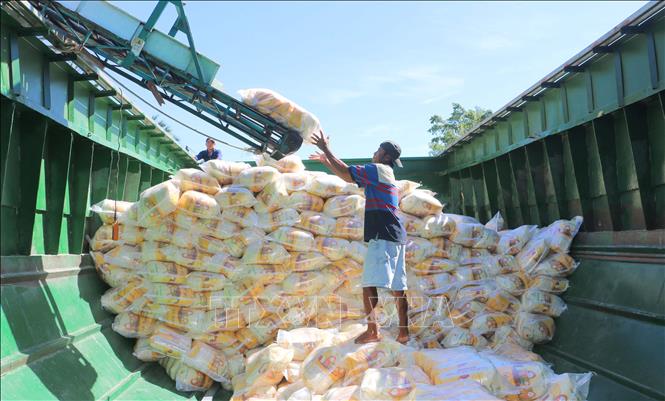
Rice is being packaged for export at Thoai Son Grain Co., Ltd., a subsidiary of Loc Troi Group. Photo: Cong Mao/TTXVN
From mid-February until now, Vietnam’s 5% broken rice export price has continuously decreased by nearly $60/ton and is $85/ton lower than the peak of $663/ton in December 2023.
In the second half of February 2024, the export prices of rice and similar grades in Thailand and Pakistan also decreased. However, during the latest adjustment on March 4th, the price of Thai rice increased slightly, with 5% broken rice rising by an additional $4 to $613/ton, 25% broken rice priced at $561/ton, and 100% broken rice priced at $484/ton.
According to the Vietnam Food Association (VFA), the decline in rice export prices is due to major producing countries entering their main harvest season, resulting in abundant supply and importers delaying orders. Specifically, in Vietnam, the Mekong Delta provinces (Vietnam’s largest rice hub) are currently experiencing the main winter-spring harvest. The decrease in rice export prices has also affected domestic rice prices. As a result, rice prices in Mekong Delta provinces have decreased by 1,000-2,000 VND/kg compared to before the Lunar New Year.
According to the update from the Department of Agriculture and Rural Development of An Giang province on March 4th, the average price of fresh paddy purchased in the fields ranges from 7,200 to 8,000 VND/kg. Specifically, fragrant rice (RD18) fluctuated around 7,800-8,000 VND/kg, IR 504 rice was priced at 7,200-7,300 VND/kg, OM 5451 rice at 7,300-7,400 VND/kg, Nang Hoa 9 rice ranged from 7,500-7,700 VND/kg, OM 18 rice at 7,600-7,800 VND/kg, and Japonica rice at 7,800-8,000 VND/kg.
Although rice export prices have continuously decreased, experts believe that this is only a short-term trend and will not decline too deeply due to the high global food demand and limited supply caused by the impact of climate change.
Specifically, according to the forecast of the US Department of Agriculture, the world would face a shortage of about 8.6 million tons of rice in 2024. The leading rice importing countries such as the Philippines, Indonesia, and China all have plans to increase rice imports this year. In particular, the Philippines is expected to import a record 3.8 million tons of rice, and Indonesia is also planning to import about 3.6 million tons of rice. Moreover, China, after a long period of import suspension and use of reserve rice, has also begun to plan to resume rice imports. On the other hand, India, the world’s largest rice producer, continues its policy of restricting exports to stabilize domestic food prices.
Ms. Phan Mai Huong, a market expert and co-founder of rice market news site SS Rice News, analyzed that the current rice export price is lower than the peak in 2023 but still higher than the average level of previous years. The recent downward trend in rice prices follows the market’s supply and demand rules. Although global food demand remains high, it is not as urgent as in previous periods. Furthermore, major rice-producing countries like Vietnam and Thailand are currently in the middle of the main winter-spring harvest, which is the largest production season of the year. Therefore, the supply is abundant. Large rice importers are aware of the harvest timing and rice production volume from various countries, so they are not in a rush to make purchases and instead wait for better prices.
“The decline in export prices has led to a cooling down of raw rice prices domestically. This is an opportunity for rice exporters to boost purchases and build up stocks for future orders. However, after a tumultuous 2023 where many rice exporters suffered losses, they are currently facing financial difficulties or are only purchasing the necessary volume, without being able to stock up. In general, rice exporters still have to balance their own financial situation and determine the timing of purchases based on the signed export contracts with their partners. However, if there are support policies regarding favorable interest rates or credit sources for purchasing and reserving rice, exporters will be more confident in making purchases, and the consumption of winter-spring rice for farmers will be faster,” said Ms. Phan Mai Huong.
In relation to this issue, on March 2nd, Prime Minister Pham Minh Chinh signed and issued Directive No. 10/CT-TTg on promoting sustainable, transparent, and efficient production, business, and export of rice and stable rice prices in the new situation. In which, the Ministry of Finance and the State Bank of Vietnam are responsible for leading and coordinating with relevant agencies to study and resolve obstacles related to VAT tax refund in accordance with their authority and the provisions of the law; lead and coordinate with the Minister of Agriculture and Rural Development, and the Minister of Industry and Trade to calculate and propose appropriate and effective plans for purchasing rice reserves in accordance with regulations.
The State Bank of Vietnam directed commercial banks to create favorable conditions for individuals and businesses to access credit at preferential interest rates and meet the credit needs for rice purchase and rice export, especially for the purchase of winter-spring harvested rice in the Mekong Delta provinces. At the same time, they should study and propose authorized-level measures to issue credit support programs for the interconnected production, processing, and consumption of high-quality and low-emission rice products in the Mekong Delta according to the law.
Rice businesses hope that relevant agencies will soon implement the above directive, allocate appropriate credit funds to ensure that rice purchase and temporary storage take place in a timely and convenient manner for both the people and businesses.









